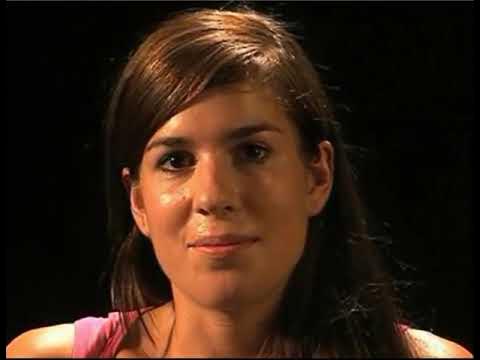9 things lebanese people do!
Summary
TLDRThis fun and lively video highlights nine unique body language gestures commonly used by Lebanese people. From expressive hand movements and eyebrow raises to the infamous 'spit of shame' and 'first finger of death,' the script explores the colorful and dramatic ways Lebanese individuals communicate without words. Each gesture is infused with humor and cultural significance, giving viewers a light-hearted and entertaining insight into Lebanese social customs and non-verbal expressions.
Takeaways
- 😀 Lebanese people often use hand gestures to express themselves, such as shaking their hands to ask 'what's up' while shaking their heads.
- 😀 Instead of regular head nods or handshakes, Lebanese people raise their eyebrows to express 'yes' or 'no'. This is a more dramatic and efficient way to communicate.
- 😀 When Lebanese people want someone to be quiet, they use a threatening gesture with their eyes wide open to make the person stop talking.
- 😀 The 'first fingers of death' is a Lebanese gesture where parents use their index and middle fingers to point and scold their children, often in a strict or serious manner.
- 😀 Lebanese people also use a quick 'click' sound to indicate disagreement or rejection, often accompanied by eyebrow movements for extra emphasis.
- 😀 The 'lip bite of embarrassment' is a gesture where the Lebanese person bites their lip to indicate shame or embarrassment, rather than trying to be flirtatious as it might be perceived elsewhere.
- 😀 Even when in pain, Lebanese people might exaggerate their reactions, often using their body language to convey intensity.
- 😀 The 'Lebanese fist gesture' is a universal sign for greeting or acknowledgment in Lebanon, where it can be executed in different ways, including a straight or upward fist motion.
- 😀 The 'spit of shame' is a unique gesture in Lebanon, signaling disapproval or contempt, often accompanied by other verbal expressions.
- 😀 Lebanese people tend to have distinct, colorful body language that goes beyond words, offering both practical and cultural significance.
Q & A
What does the hand gesture in Lebanese culture signify?
-In Lebanese culture, the hand gesture with a raised hand and a head shake is used to express curiosity or to ask 'What’s going on?' It's a common way to inquire about something without using words.
How do Lebanese people communicate with their eyebrows?
-Lebanese people use eyebrow movements as a non-verbal way of communicating. Instead of nodding or shaking their head, they raise or lower their eyebrows to signal agreement or acknowledgment. This gesture is often subtle and can be done while multitasking.
What does the intense 'hiss' gesture mean in Lebanese culture?
-The 'hiss' gesture, accompanied by a wide-eyed look, is a Lebanese way to tell someone to be quiet. It is a strong and intimidating gesture, used to stop someone from speaking, often signaling authority or disapproval.
What is the 'First Finger of Death' gesture, and when is it used?
-The 'First Finger of Death' is a gesture often used by mothers or authority figures in Lebanon to reprimand a child. It signals disapproval and is meant to indicate a serious warning or reprimand. It's a powerful non-verbal cue.
What does the 'click' sound mean in Lebanese culture?
-The 'click' sound, often accompanied by raised eyebrows, is a quick and distinct way Lebanese people say 'no.' It’s a more refined and assertive way of refusing or rejecting something or someone.
What does the lip bite gesture signify in Lebanon?
-In Lebanon, a lip bite is a sign of embarrassment, not flirtation. It is used when someone feels self-conscious, guilty, or has made a mistake, signaling a need to stop an embarrassing action immediately.
How do Lebanese people express pain non-verbally?
-Lebanese people have a unique way of expressing pain, whether physical or emotional. Their reaction is often dramatic, with exaggerated gestures to emphasize the level of discomfort they’re feeling.
What is the traditional 'Good Luck' gesture in Lebanese culture?
-The 'Good Luck' gesture in Lebanon involves extending the hand and keeping the fingers together, then performing a traditional movement. It's a blend of ancient tradition and modern style, often used to wish someone good fortune.
What does the 'Spit of Shame' gesture mean in Lebanese culture?
-The 'Spit of Shame' is a dramatic gesture used when someone feels deeply embarrassed or ashamed. It's not a commonly used gesture, but it holds significant cultural meaning when someone feels humiliated.
Why are these non-verbal gestures important in Lebanese culture?
-These non-verbal gestures are important because they reflect the rich cultural heritage of Lebanon. They allow for expressive communication without words, adding depth to interactions and showcasing the Lebanese people’s lively and dramatic personalities.
Outlines

This section is available to paid users only. Please upgrade to access this part.
Upgrade NowMindmap

This section is available to paid users only. Please upgrade to access this part.
Upgrade NowKeywords

This section is available to paid users only. Please upgrade to access this part.
Upgrade NowHighlights

This section is available to paid users only. Please upgrade to access this part.
Upgrade NowTranscripts

This section is available to paid users only. Please upgrade to access this part.
Upgrade NowBrowse More Related Video

【日本の文化習慣#3】日本人のジェスチャー

Body Idioms: Improve your English Fluency with 10 Common Idioms based on Body parts! 🤚 🦶 👁

Come parlare senza parlare | Luca Vullo | TEDxVarese

Non-Verbal Communication | Leyla Tacconi | TEDxBritishSchoolofBrussels

Aspekte neu B2 Lehrbuch | Kapital 2 | Szene 1 | Aufg. 2a #languagelearning #exampreparation #videos

Three Minute Thesis competition 2018 Winner - Willemijn Doedens
5.0 / 5 (0 votes)